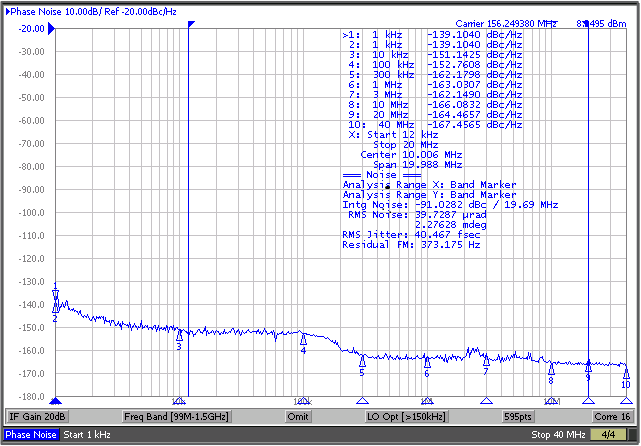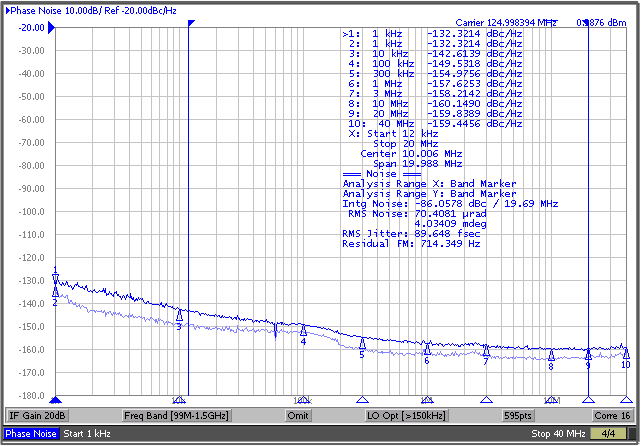SCAS841D February 2007 – December 2016 CDCLVD110A
PRODUCTION DATA.
- 1 Features
- 2 Applications
- 3 Description
- 4 Revision History
- 5 Pin Configuration and Functions
- 6 Specifications
- 7 Parameter Measurement Information
- 8 Detailed Description
- 9 Application and Implementation
- 10Power Supply Recommendations
- 11Layout
- 12Device and Documentation Support
- 13Mechanical, Packaging, and Orderable Information
封装选项
机械数据 (封装 | 引脚)
散热焊盘机械数据 (封装 | 引脚)
- RHB|32
订购信息
9 Application and Implementation
NOTE
Information in the following applications sections is not part of the TI component specification, and TI does not warrant its accuracy or completeness. TI’s customers are responsible for determining suitability of components for their purposes. Customers should validate and test their design implementation to confirm system functionality.
9.1 Application Information
The CDCLVD110A device is a low-additive jitter, LVDS fan-out buffer that can generate ten copies of two selectable inputs. The CDCLVD110A can accept reference clock frequencies up to 1100 MHz. The small package, low output skew, and low additive jitter make for a flexible device in demanding applications.
9.2 Typical Application
 Figure 14. Fan-Out Buffer for Line Card Application
Figure 14. Fan-Out Buffer for Line Card Application
9.2.1 Design Requirements
The CDCLVD110A shown in Figure 14 is configured to select two inputs: a 156.25-MHz LVDS clock from the backplane, or a secondary 156.25-MHz LVCMOS 2.5-V oscillator. The LVDS clock is AC-coupled and biased using the integrated reference voltage generator. A resistor divider is used to set the threshold voltage correctly for the LVCMOS clock. 0.1-µF capacitors are used to reduce noise on both VAC_REF and SECREF_N. Either input signal can be then fanned out to desired devices, as shown. The configuration example is driving 4 LVDS receivers in a line card application with the following properties:
- The PHY device is capable of DC-coupling with an LVDS driver such as the CDCLVD110A. This PHY device features internal termination so no additional components are required for proper operation.
- The ASIC LVDS receiver features internal termination and operates at the same common-mode voltage as the CDCLVD110A. Again, no additional components are required.
- The FPGA requires external AC-coupling, but has internal termination. 0.1-µF capacitors are placed to provide AC-coupling. Similarly, the CPU is internally terminated, and requires only external AC-coupling capacitors.
9.2.2 Detailed Design Procedure
See Input Termination for proper input terminations, dependent on single-ended or differential inputs.
See LVDS Output Termination for output termination schemes depending on the receiver application.
Unused outputs can be left floating.
In this example, the PHY, ASIC, and FPGA or CPU require different schemes. Power supply filtering and bypassing is critical for low-noise applications.
A reference layout is provided in Low-Additive Jitter, Four LVDS Outputs Clock Buffer Evaluation Board (SCAU043).
9.2.3 Application Curves
The CDCLVD110A low-additive noise is shown in this line card application. The low-noise 156.25-MHz source with 40-fs RMS jitter drives the CDCLVD12xx, resulting in 64-fs RMS when integrated from 12 kHz to 20 MHz. The resultant additive jitter is a low 50-fs RMS for this configuration.
 Figure 15. CDCLVD110A Reference Phase Noise,
Figure 15. CDCLVD110A Reference Phase Noise,40-fs RMS (12 kHz to 20 MHz)
 Figure 16. CDCLVD110A Output Phase Noise,
Figure 16. CDCLVD110A Output Phase Noise,64-fs RMS (12 kHz to 20 MHz)